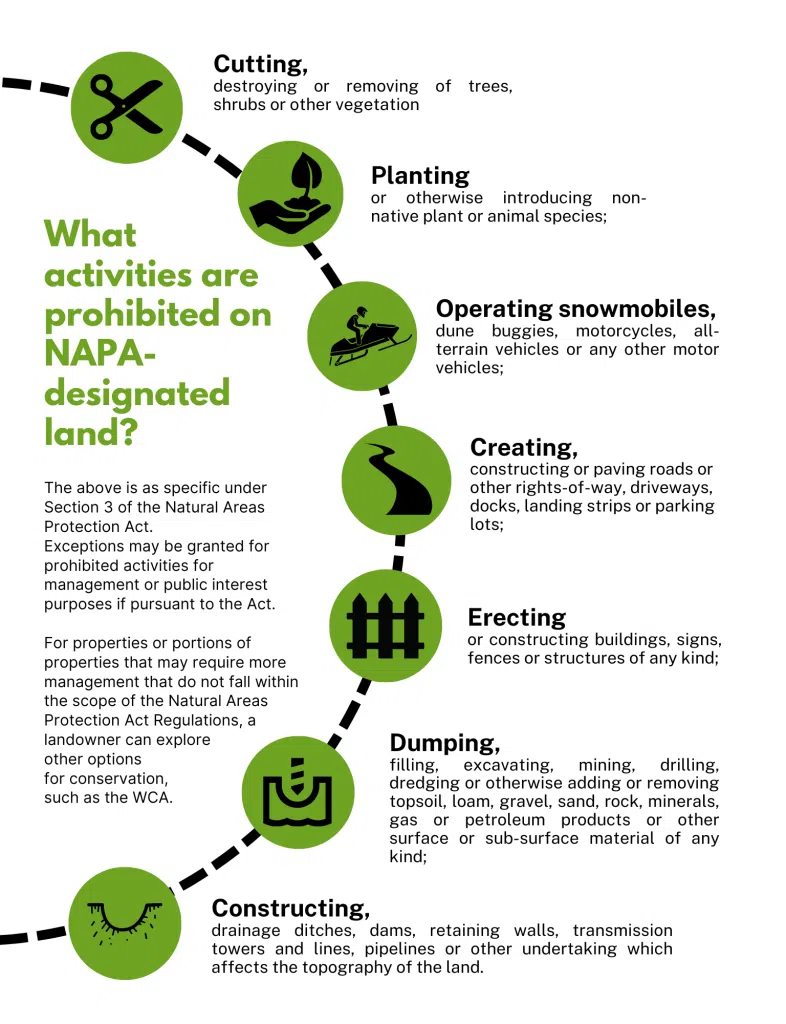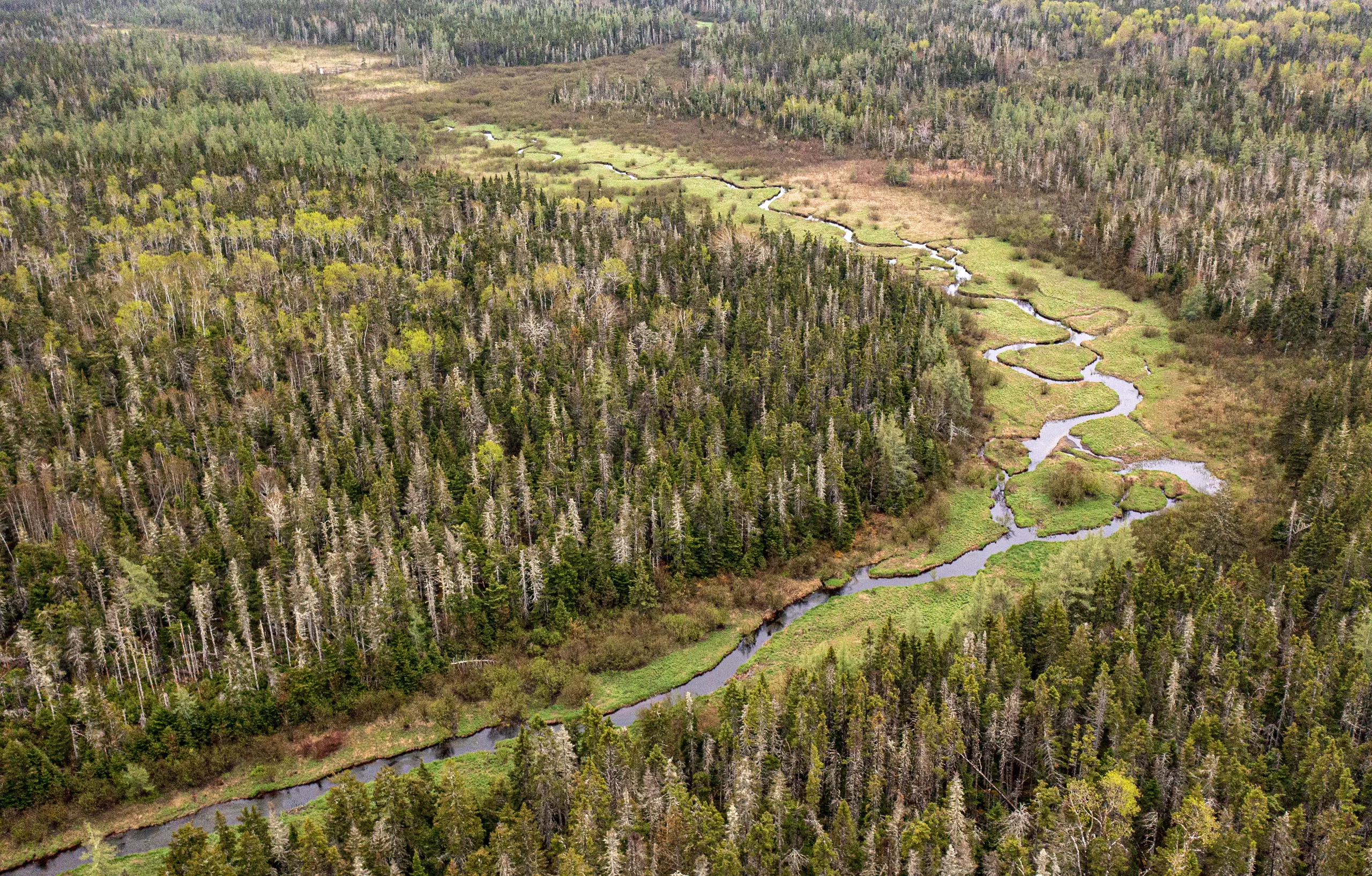Many of Prince Edward Island’s residents have strong ties to the Island and would like to see the natural features that define the landscape preserved for future generations to enjoy. There are several options for private landowners who are interested in protecting their properties from future development and conserving the land’s natural features. Island Nature Trust has an “Options booklet” available for people interested in exploring land conservation opportunities. For landowners who want to keep their properties in their family for future generations, but also want to ensure that they are not developed in the future, using a legal mechanism such as the Natural Areas Protection Act (NAPA) might be the right option. Protecting land under the NAPA is a big decision, and big decisions are often paired with several questions. We hope to answer a few of them here today.
What tools or options are available to conserve my property?
Legally designating your property under the NAPA or Wildlife Conservation Act (WCA)
- NAPA is the gold standard of land protection for property and includes a restrictive covenant that is bound to the property’s deed in perpetuity – this is usually reserved for ecologically significant or sensitive land that may contain unique ecosystems or habitats for species at risk. Designated lands can be owned and sold, but they cannot be developed or subdivided. There are often heavy restrictions on NAPA-protected properties, which is why NAPA is more suitable for established parcels that do not require work or maintenance.
- WCA is generally more flexible and can allow for more management opportunities and is generally more suitable for parcels that are managed for specific species or wildlife groups. Land can be designated under the WCA for a term (i.e. 20 years), or in perpetuity, these lands can also be owned and sold, but cannot be developed or subdivided while designated.
Ways to actively steward your property without designation
- Apply for the provincial Forest Enhancement Program (FEP).
- Work with local watershed groups (i.e. Managing invasive species along streams or planting trees in the riparian zone).
- Attend free information sessions environmental groups hold to learn more about land stewardship.
- Reporting rare and invasive species – and posting them on iNaturalist.
Why would I protect my land?
Protecting land under the NAPA provides benefits such as:
- Biodiversity conservation
- Climate change mitigation
- Preservation of natural areas for future generations.
- Provincial property tax exemption
What land can be designated under the NAPA?
- It contains natural ecosystems or constitutes the habitat of rare, endangered or uncommon plant or animal species.
- It contains unusual botanical, zoological, geological, morphological or palaeontological features.
- It exhibits exceptional and diversified scenery.
- It provides a haven for seasonal concentrations of birds and animals.
- It provides opportunities for scientific and educational programs in aspects of the natural environment.
For properties or portions of properties that currently do not fit within the scope of the Natural Areas Protection Act, a landowner can explore other options for conservation, such as the WCA. Properties designated under the WCA contain land that supports wildlife and its habitat.

What is permitted on NAPA-designated land?
Legally designated areas can still be enjoyed and maintained, as long as the activities that you wish to carry out are outlined in the NAPA restrictive covenant or other corresponding documents.
Can I remove the NAPA designation?
The NAPA is a permanent mechanism used to protect ecologically significant areas in PEI; these areas are designated as “Natural Areas” and will be conserved in perpetuity. Designation can only be removed from public natural areas on Crown land, by the Minister of Environment, Energy, and Climate Action under very special circumstances which are outlined under Section 3, subsection (3) of the Natural Areas Protection Act.
Are there any costs associated with designating my property under the NAPA?
There are some circumstances where costs may be associated with protecting your land, these include:
- Hiring a lawyer to review legal paperwork;
- Hiring an accountant to make recommendations;
- Hiring a surveyor if developed land needs to be subdivided from the proposed natural area.
Costs may also be associated with the construction of a Forest Management Plan for the property or other stewardship work (i.e. planting trees, and silviculture activities).
How will protecting my land impact the property’s value?
The length of time it takes to protect your land is variable and depends on whether you need to subdivide, perform a survey, have documents reviewed by a lawyer or accountant, etc. since these activities will increase the amount of time. Generally, protecting land under the NAPA takes approximately 6-12 months.
Who can help me protect my land?
- INT and the Province
- Other land trusts
- Ducks Unlimited
- Nature Conservancy of Canada
- Municipalities



Ways To Protect Your Land
Private Stewardship
You can retain ownership of the land and still place it under NAPA protection. Our resource guide “Protecting Natural Places in Prince Edward Island”’ provides more detail on this option.
Donate or Sell Your Land
For those who are able, the act of giving land to a land trust so that it may be protected is the ultimate in generosity. Island Nature Trust profoundly appreciates anyone who considers such a gift.
Get in touch

